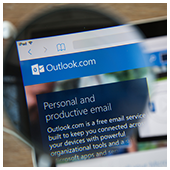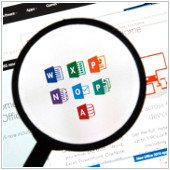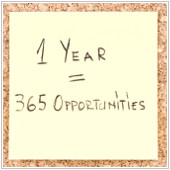 Communication might be the key to personal relationships, but collaboration is the key to business connections. That’s why many small- and medium-sized businesses are looking into Office 365, a productivity and collaboration-enhancing software that allows employees to stay productive on-the-go. Recently, Microsoft announced some new Office 365 features, and we’ve rounded up the four latest updates:
Communication might be the key to personal relationships, but collaboration is the key to business connections. That’s why many small- and medium-sized businesses are looking into Office 365, a productivity and collaboration-enhancing software that allows employees to stay productive on-the-go. Recently, Microsoft announced some new Office 365 features, and we’ve rounded up the four latest updates:
Real-time collaboration in PowerPoint
Users will now be able to share a PowerPoint deck and update documents with others in real time. This means you’ll be able to see edits as your colleagues make them. Microsoft was committed to expanding real-time co-authoring of a company’s native applications, with Microsoft Word already rolling out this feature beforehand. Currently, real-time collaboration is available for PowerPoint on Windows desktops for Office 365 subscribers in the Office Insider program and for PowerPoint Mobile on Windows tablets.
Move attachments to the cloud and share with colleagues in Outlook
According to Kirk Koenigsbauer, corporate vice president for the Office team, this feature allows users to transform a traditional document into a shared cloud document within Outlook. Previously, Outlook users could only attach cloud-based documents to an email, but this new feature makes it easier to send large files and to collaborate on those files with ease.
Users can upload files into their own OneDrive or a document library as part of an Office 365 group and then designate sharing permissions for the email recipients. The new feature is currently available in Outlook on the web as well as Outlook on Windows desktops for Office 365 subscribers.
Mobile notifications for changes to shared documents
With this new update, users will be notified when any cloud documents in Word, Excel and PowerPoint are being shared or edited. These notifications let you know when changes are being made, even if you are away from a particular document, so you’re always connected and know when you have to act. This feature can be integrated with the activity feed on Windows desktops, and help businesses improve user collaboration. Koenigsbauer says that Microsoft will continue working on the notification feature “to provide more detail and transparency around shared document activity in the future.” Sharing and editing notifications are available for Word, Excel, and PowerPoint users on Android and Windows Mobile for Office Insiders. This feature will be available for commercial users in all Office mobile applications in the coming months.
Find, open, and save documents in a Shared with Me and Recent Folders tab
Microsoft’s “Shared with Me” tab in Word, Excel, and PowerPoint makes it easier for enterprise users to find and open shared documents without having to leave the app you’re working in. At the moment, the Shared with Me tab is available on Windows desktops and Macs for all Office 365 subscribers, iOS and Android devices included. And soon, it will be available on Windows Mobile. And the “Recent Folders” tab — used to help quickly locate files as well — is now available in Word, Excel and PowerPoint on Windows desktops for Office 365 subscribers in the Office Insider program.
Technology has become an integral part of modern businesses, and investing in the right IT resources is needed in order to achieve success. With the latest additions to Microsoft Office 365, small- and medium-sized businesses will enjoy enhanced staff collaboration, increased corporate productivity, and an overall competitive advantage.

 Every now and then we all need a little help, especially in today’s digital era. To keep up with the competition, companies are gearing up, especially in the IT department. With the help of cloud computing technology, Office 365 is a productivity and collaboration-enhancing software that is changing the way small- and medium-sized businesses operate. Here are four of the latest features added to Office 365:
Every now and then we all need a little help, especially in today’s digital era. To keep up with the competition, companies are gearing up, especially in the IT department. With the help of cloud computing technology, Office 365 is a productivity and collaboration-enhancing software that is changing the way small- and medium-sized businesses operate. Here are four of the latest features added to Office 365:








 Is there anything worse than an unproductive meeting? The feeling of those minutes and even hours slipping by you as you sit ‘brainstorming’ with co-workers, only to leave the room with a big fat nothing. The frustrating part is that, when run effectively, meetings can result in great ideas, and can add huge value to your company. But how do you make that shift from pointless meetings to productive ones? That’s where Do.com comes in. Here’s how to make the change in your organization.
Is there anything worse than an unproductive meeting? The feeling of those minutes and even hours slipping by you as you sit ‘brainstorming’ with co-workers, only to leave the room with a big fat nothing. The frustrating part is that, when run effectively, meetings can result in great ideas, and can add huge value to your company. But how do you make that shift from pointless meetings to productive ones? That’s where Do.com comes in. Here’s how to make the change in your organization.